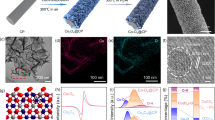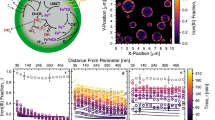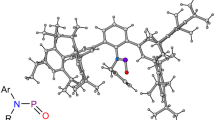Abstract
IN the course of an investigation on the kinetics of the thermal decomposition of ozone sensitised by the presence of bromine vapour, a very interesting reaction came to light. Under certain conditions as to temperature and concentration of ozone and bromine (see Z. f. anorg. Chem., 182, 182; 1929; Z. f. Elektrochemie, 35, 651; 1929), it was found that the bromine disappeared slowly but quantitatively from the gas phase and was deposited on the walls of the containing vessel as a solid oxide of bromine (hitherto unknown). Under these conditions of complete oxide formation, the residual ozone decomposed at a constant rate until nearly all of it had disappeared. The final result can be represented as 2O3→3O2.
This is a preview of subscription content, access via your institution
Access options
Subscribe to this journal
Receive 51 print issues and online access
$199.00 per year
only $3.90 per issue
Buy this article
- Purchase on SpringerLink
- Instant access to full article PDF
Prices may be subject to local taxes which are calculated during checkout
Similar content being viewed by others
Author information
Authors and Affiliations
Rights and permissions
About this article
Cite this article
LEWIS, B., SCHUMACHER, HJ. A First Order Solid Phase Reaction. Nature 125, 129 (1930). https://doi.org/10.1038/125129b0
Issue date:
DOI: https://doi.org/10.1038/125129b0



